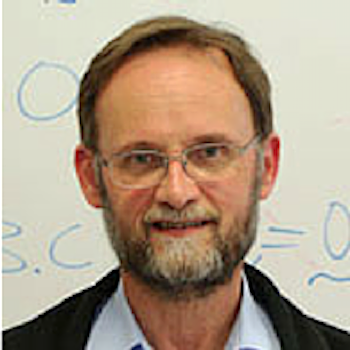We use cookies on this site to enhance your experience.
By selecting “Accept” and continuing to use this website, you consent to the use of cookies.

Larry Forbes is an Applied Mathematician from the University of Tasmania, in Australia's island state. He did his Ph.D. with Len Schwartz and the late Ernie Tuck on steady water waves produced by under-sea objects. He then worked for the Defence Department in Melbourne, before moving to the University of Iowa to work with Lou Landweber. He was an Assistant Professor at Kansas State, and then moved to Queensland University back in Australia. Since 2000, he has been a full Professor at the University of Tasmania. He is interested in non-linear fluid-flow problems, dynamical systems and the use of Applied Mathematics to design medical imaging equipment.
Abstract:
In many applications involving waves at the surface of a fluid, it is often sufficient just to consider steady-state situations, where the wave pattern does not change noticeably with time. Waves behind moving ships are one such example. There is an enormous literature on such situations, and at least for two-dimensional flow, steady waves can be computed reasonably accurately.
As computers have developed, it has now become possible to look at 2D and even 3D unsteady problems, where the fluid interface evolves with time. These unsteady flows have some surprising behaviour, both analytically and numerically. If fluid viscosity is ignored, it is now known that classical flows such as the Rayleigh-Taylor Instability fail within finite time, when the curvature of the free surface becomes infinite at certain points. This appears to be a common feature in unsteady inviscid flows. In other geometries, such as the initially spherical outflow from a source, unsteady effects can lead to the surprising result that the lowest mode is the most unstable, so that a one-sided outflow jet evolves.
This talk will consider some examples of unsteady fluid flow, characterized by the presence of an unstable interface. We will discuss how fluid viscosity and interface thickness change the singular behaviour predicted by (non-linear) inviscid theory, in some surprisingly subtle ways.
Monday, Nov. 4, 2019
3 p.m. – 4:30 p.m.
LH 3058, Lazaridis Hall, Math Boardroom